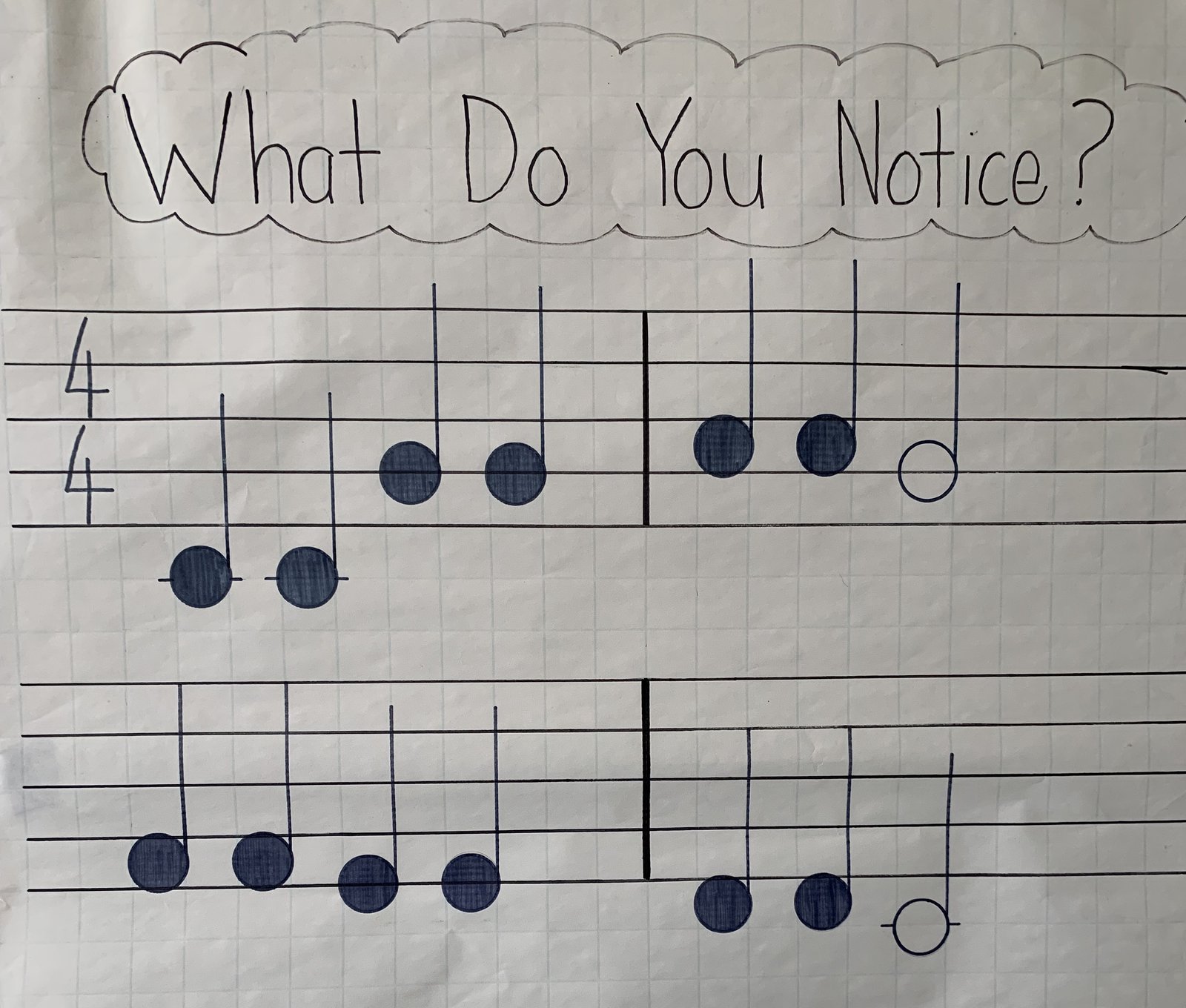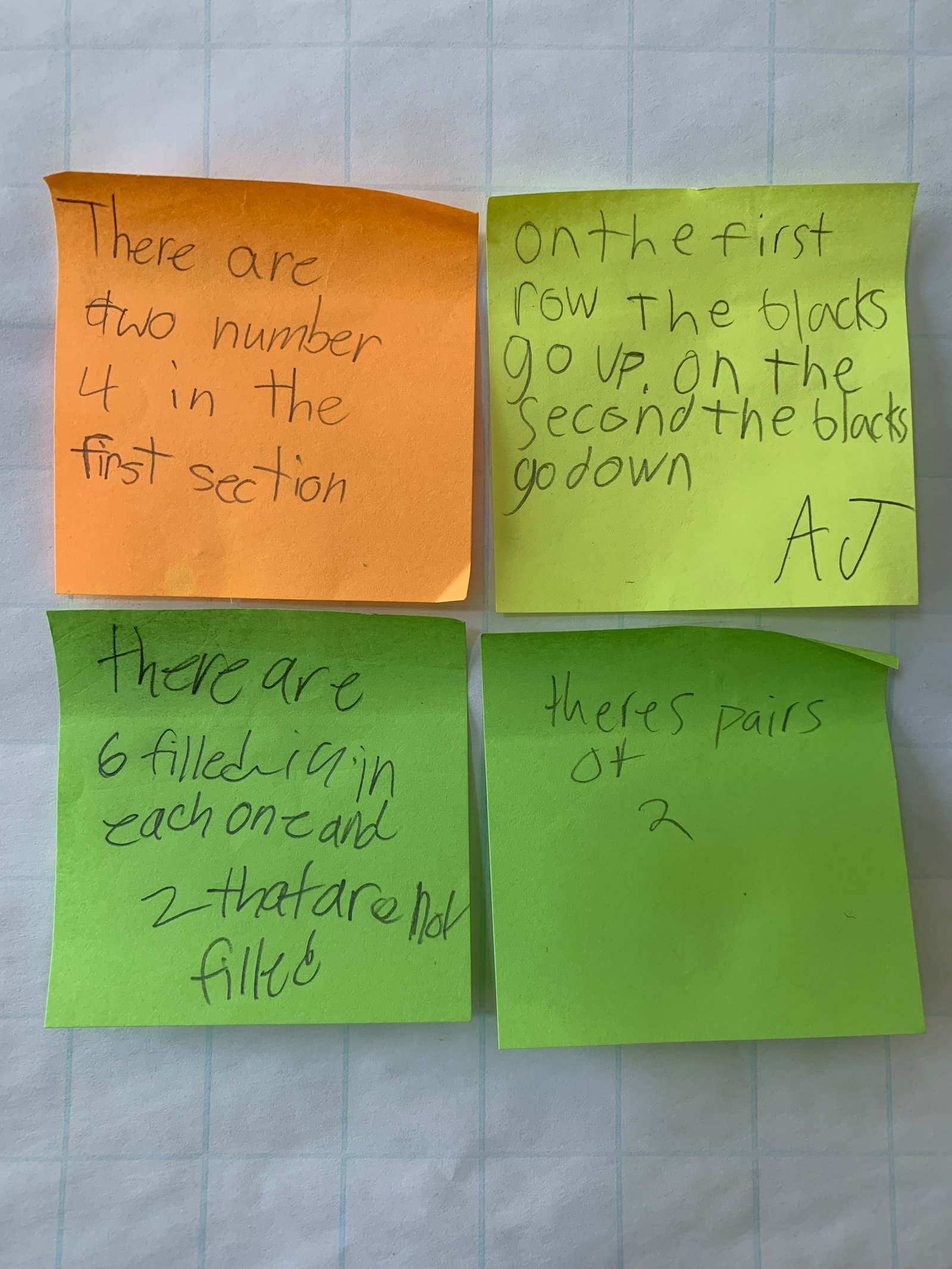
Primary students (K-2): shapes, numeral recognition; patterns, counting
Intermediate students (3-5): patterns, counting, fractions
I thought it would be fun to tie this What Do You Notice? activity in with my Musical Math Notes station I set up at a recent Family Math Night event. But I'll admit, this one was tougher than my other What Do You Notice? activities. Unless you've had some exposure to reading music, and many of the parents at the event had not, then it was hard to notice something musically math related. That said, I thought some of the comments were pretty good. I've included examples below.
Background Information: If you're familiar with reading music, you can probably hum this tune. If you did, you'd discover that it's the tune to Twinkle Twinkle Little Star.
To dive into the math part of this, you need to know that the five horizontal lines and the four spaces in between is called the staff (or stave). Each line or space represents a different musical pitch. This staff is broken into measures (sometimes called bars). You can easily identify each measure because they're separated by bar lines - the dark vertical line. I included four measures for this activity.
The 4/4 at the beginning of the first measure indicates the beat of the music. The top number tells how many beats in each measure and the bottom number tells which note value receives one beat. Each measure gets the same beats. In our case, there are 4 beats per measure and a quarter note gets one beat.
I was actually hoping that the Musical Math Notes station activity would offer some guidance in this area. But that didn't seem to be the case. Next time, I would include the information on the Musical Math Notes table tent next to the What Do You Notice? poster so that participants who were not as familiar with reading music could make more connections between math and music.
That said, here was my idea:
Younger students could notice a whole bunch of circles with little "stems". Some circles were colored in while others were not and some also had little lines coming off the sides. If they counted all the notes*, they would come up with 12 colored-in notes and two not colored-in. That's a total of 14 notes. These little ones could also notice that there were two number '4's. If they wanted to do a math problem, they could add 4 + 4 to get 8.
They could also notice that the notes on the top go mostly up and the notes on the bottom go down.
My goal for the older students was to get them to notice that each measure was 4 beats. But first they needed to notice that there were 4 measures. (Next time I may make the bars a different color to draw attention to them.) Once they noticed that there were 4 measures, they would discover that in the first and third measures, there were 4 quarter notes with each quarter note receiving one beat. In the second and fourth measures, there were two quarter notes and a half note. Each half note counts as two beats. Altogether, this short little piece of music consisted of 16 beats: 4 beats/ measure x 4 measures.
Although a little difficult to do at a Family Math Night event, with more teacher guidance, this would be a fabulous activity in the classroom!
*Because I tied this in with my Musical Math Notes station, my goal was to have students learn that these circles with stems were called notes.

"There are two number 4 in the first section."
"On the first row the blacks go up. On the second the blacks go down."
"There are 6 filled in each one and 2 that are not filled."
"There's pairs of 2."